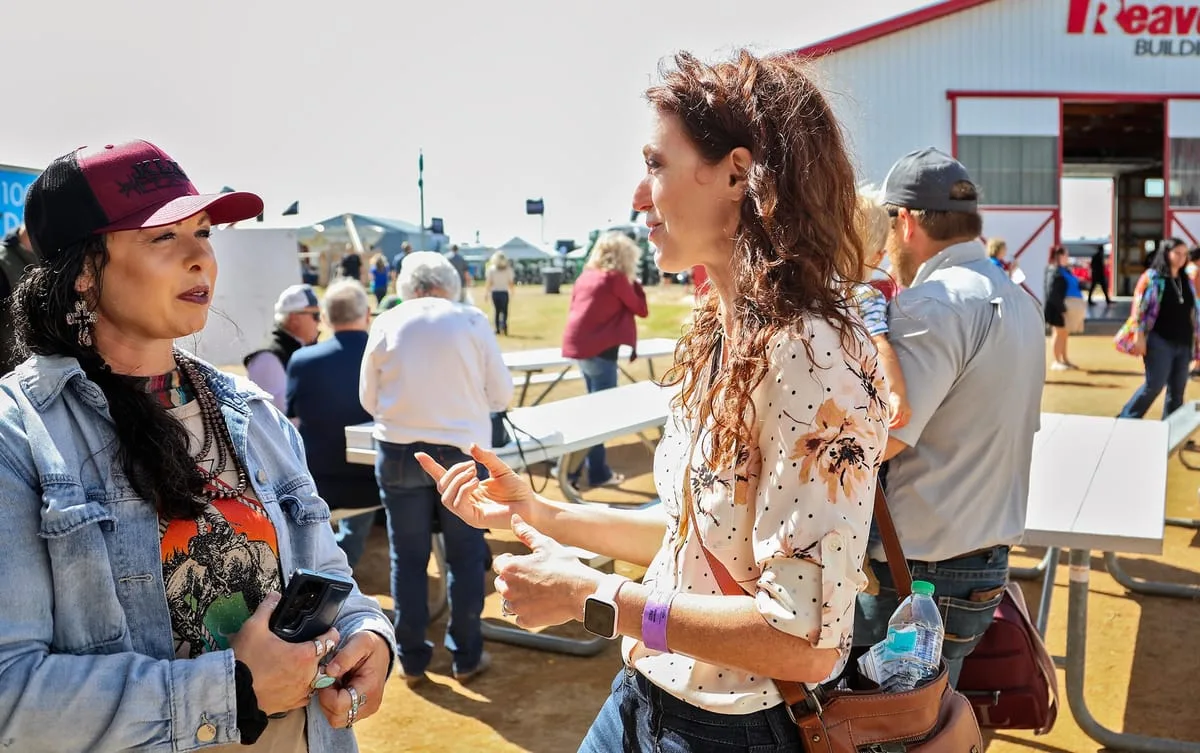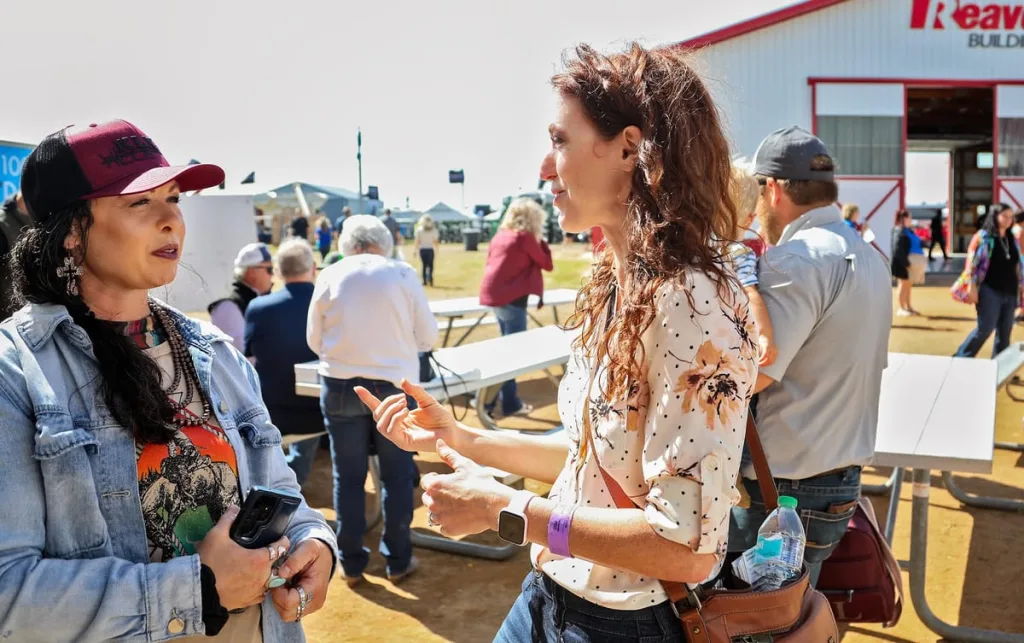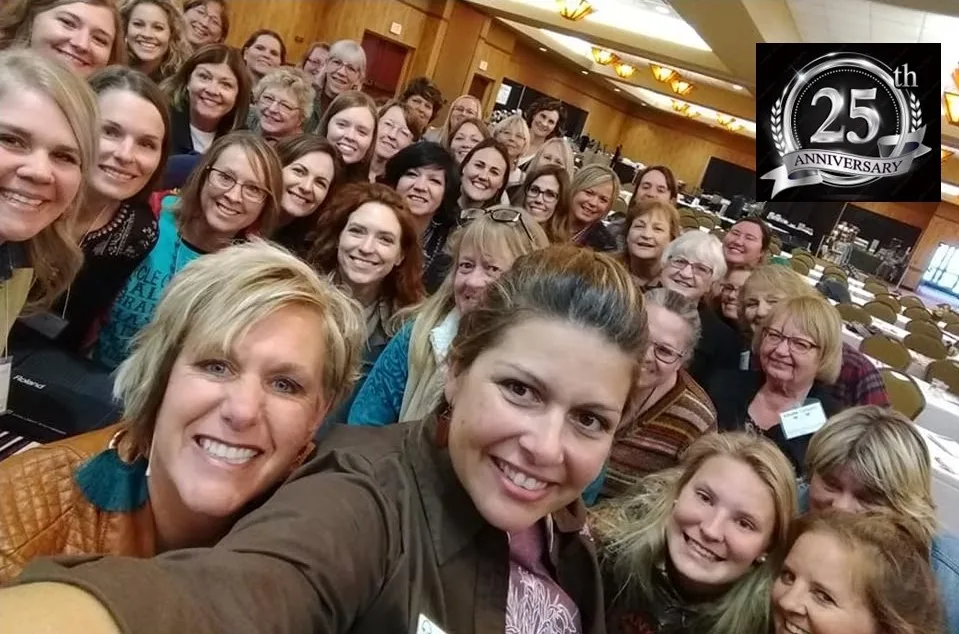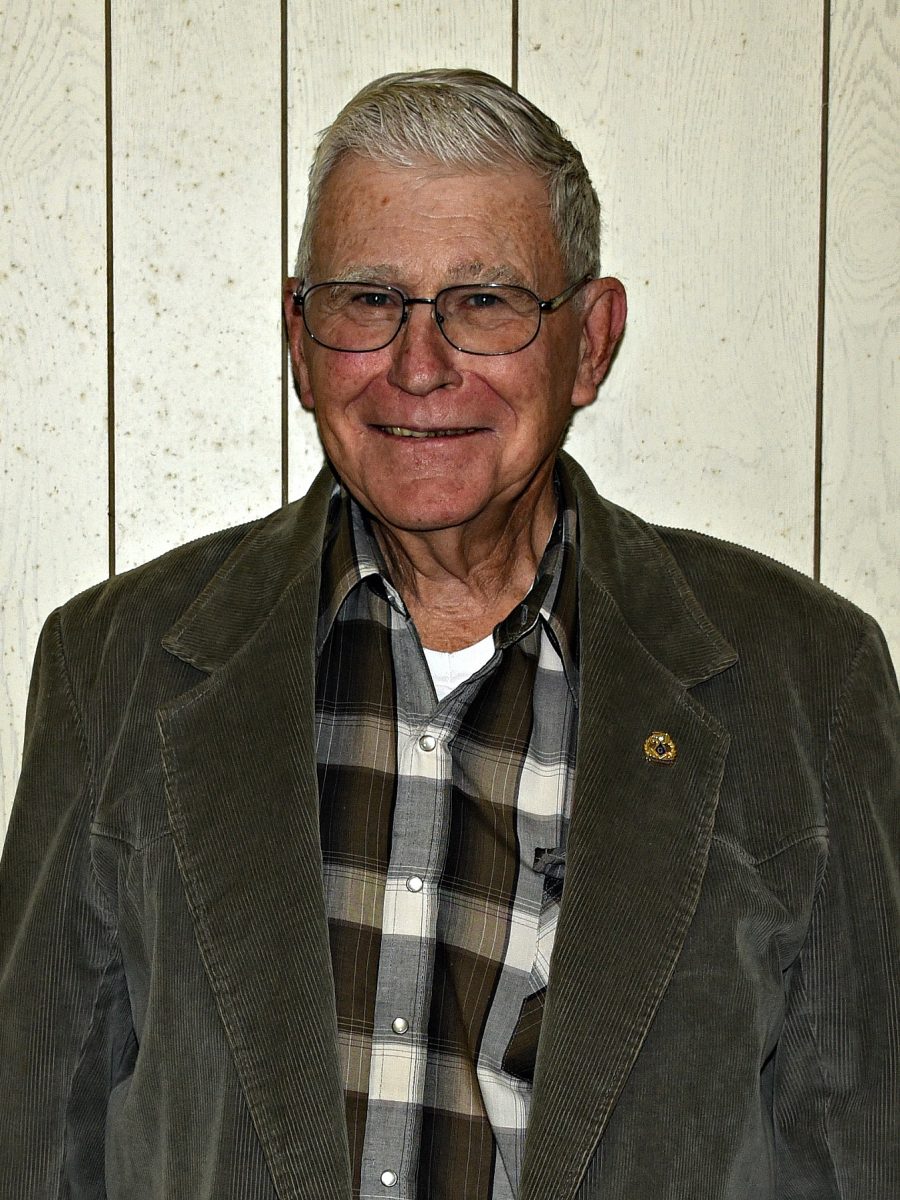South Dakota woman’s podcasting and networking effort wins $1.2 million grant to help emerging female leaders statewide expand their leadership potential.
MITCHELL, S.D. – While reflecting on the need to build her own network within the South Dakota agriculture industry, Rebecca Blue began to wonder if other women in ag were encountering the same challenge.
“I’m from South Dakota, I’m a woman in agriculture and I kept wondering what networking options are available to me and who are the women I can connect with,” said Blue, who has an extensive agriculture career that’s taken her from her hometown of Huron to Washington, D.C., and Argentina.
With an undergraduate degree in agronomy and a masters in soil sciences from South Dakota State University, Blue followed an opportunity to Washington where she continued her career in agriculture, trade and appropriations policy for eight years.
Blue eventually was ready to return to South Dakota. She now divides her time between South Dakota and her husband’s native country, Argentina, while running her own agriculture consultancy, Blue Consulting.
“It was strange for me to work my whole life in ag, be from South Dakota and have no network here,” said Blue. “I worked in D.C. most of my career and didn’t have that in-state network.”
As Blue began reaching out to South Dakota women about their networks, what she discovered was both eye-opening and motivating.
“Many women I talked to didn’t have the network they wanted. When I shared the idea of creating a place to connect, learn and collaborate, it immediately resonated with them and energized me to take it to the next level and form something meaningful,” she recalled.
With limited resources and a passion for moving her idea into something tangible, Blue used her personal savings to start a podcast, “The Best Job In South Dakota,” now wrapping up its third season.
“Podcasting is so great — it enabled me to do something I was passionate about with startup money out of my own pocket,” she shared. “I’ll admit, I’m one of those good ole South Dakota people who like to save for a rainy day, which gave me the opportunity. Plus I am fortunate to have the support of my husband, who said, ‘Go for this.’”
Launched in March 2023, “The Best Job In South Dakota” features women across the state who are making a difference in their communities through agriculture and related fields. Through the power of storytelling, Blue and co-host Chris Church aim to highlight the vital role women play while educating listeners about the importance of agriculture both on and off farms and ranches.
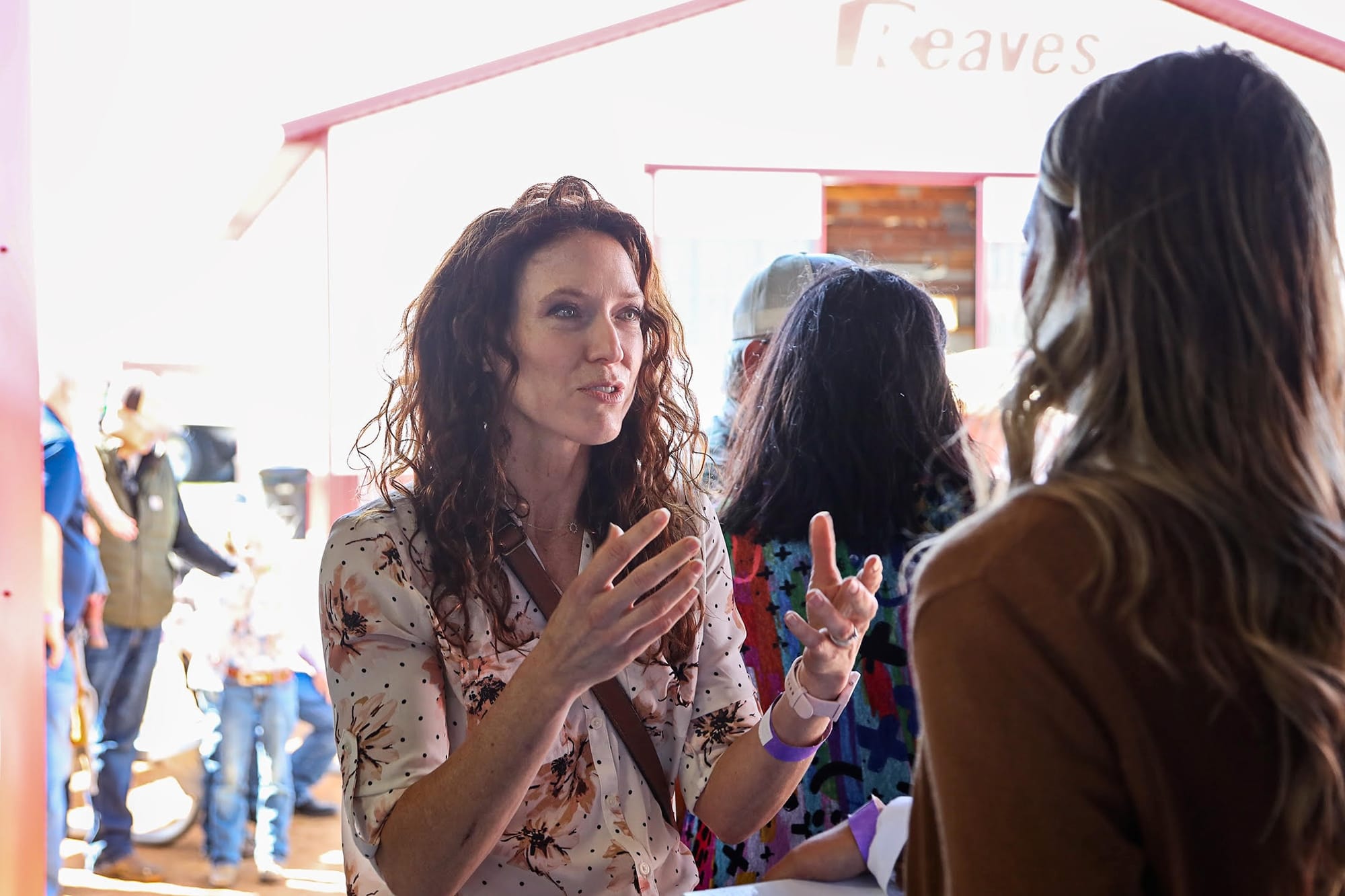
The podcast illustrates the impact of agriculture on all people, no matter where they live, to help ensure agriculture’s strength in the economy well into the future.
As she met and interviewed more women for the podcast, she found a kindred spirit in each of her guests and a resounding need for resources to help women in agriculture connect and grow their networks.
“I went out on my own and realized I was not alone. There were all these women going through the same thing. The podcast opened my eyes to the need for women to hear the stories of other women,” she said. “Women in agriculture have been a pivotal part of my own career. They expose you to leadership and opportunities, helping you get to these new avenues you maybe didn’t see yourself getting to.”
Access to funding through networking
Through the podcast, Blue continued to grow her network. Then one of her guests in Season 1, Rachel Lawton, served as what Blue calls “the spark” to take her ideas to the next level. Lawton is a Natural Resources Conservation Service (NRCS) urban conservationist for the South Dakota Soil Health Coalition.
“That’s when the bigger program started to develop,” recounts Blue. “Networking at its best — that interview with Rachel led me to have conversations with other people at NRCS and they said, ‘Hey we think we might know of a funding opportunity.’”
In addition to NRCS, Angela Ehlers, executive director of the South Dakota Association of Conservation Districts (SDACD) was brought into the fold.
“I’ve always felt we’ve been wasting half the human potential,” said Ehlers. “Personally, I’ve always been a big supporter of women in leadership.”
In her position, Ehlers works closely with the state’s 68 conservation districts. During her 35 years with SDACD, she’s played an integral role forming new coalitions including the South Dakota Agricultural Land Trust, the Grasslands Coalition and the Soil Health Coalition. In 2021, she won the prestigious Spirit of Dakota Award.
Ehlers explained that she and Colette Kessler, assistant state conservationist for partnerships at NRCS, were having a conversation about what they could bring to the table.
“USDA had some increased funding for reaching out to underserved or unserved populations. As we were brainstorming, we came up with the idea we could apply to provide network assistance for emerging female leaders to expand leadership potential in South Dakota,” Ehlers shared.
Ehlers points to the low percentage of female board member and supervisor representation within local conservation districts as an example. Women represent just 10-15%.
Ehlers advised Blue that SDACD and the Jones County Conservation District wanted to apply to fund a project that would support increased engagement of women in agriculture and conservation through networking and educating.
“I originally thought of starting a mentoring program, but as my objective became clearer, the project focus shifted,” Blue said. “I want to develop a program that helps women be seen, exposes them to leadership opportunities and creates a safe space to share ideas and connect. I finally realized that’s not mentoring, that’s a networking program. We had a brainstorming session and I went ahead and wrote up a proposal.”
Having managed NRCS grants throughout her career, Ehlers looked at the South Dakota Conservation Collaboration Cooperative Agreement, identifying what parts of Blue’s program fit within the agreement.
“Rebecca brought a wealth of experience. She’s been out there interviewing women across the state and ruminating on what they’re saying, what their needs are,” Ehlers shared. “The point of this project is to connect, and it starts at the local level with people.”
Significant award granted
In June, a Conservation Collaboration Cooperative Agreement in the amount of $1,173,682 was signed by NRCS, the Jones County Conservation District and the South Dakota Association of Conservation Districts. The project team, led by Blue, includes Ehlers, Kessler and Darrel DuVall, state outreach coordinator for NRCS.
Work is underway to develop and implement a program to connect, engage and educate women in agriculture and conservation, empowering them to grow their networks, expand their opportunities and build collaboration.
The underlying belief driving the project is that women play an integral role in shaping the future of agriculture and conservation. Until now, women-specific data has been murky due to a lack of clear metrics.
“When I came into this position several years ago, I did an analysis on where we are with the different groups we service. As I went through that process and pulled out women and women-owned entities, there appeared to be a gap of direct financial assistance with women and women-owned entities based on census data,” said DuVall. “I came back to NRCS leadership and said the metrics don’t show we are doing well with women. One, we either need better metrics or, two, we need to put an emphasis on reaching out to women operators.”
The metrics DuVall refers to indicate that according to USDA National Agricultural Statistics Service (NASS) Ag Census data, 31% of producers in South Dakota are female. He explained that South Dakota NRCS does not have a good baseline to show if the agency is meeting the needs of women operators/producers in agriculture.
“We want to make certain all our programs and services are available to all — large and small, urban and rural, male and female — so we are putting forth the effort to identify barriers and make adjustments as needed,” he shared. “The project will also help NRCS gather solid data to clarify if there is indeed a gap connecting with women decision makers when it comes to land stewardship as well as providing a support system.”
Statewide networking hubs enable in-person contact
The proposal includes the formation of hubs staffed by managers in six regions across the state, within the vicinities of Sioux Falls, Brookings, Huron, Eagle Butte, White River and Spearfish.
“We went with hubs because we knew that none of us can be everywhere all the time. Plus it’s an effective model to build local connections. Distance is an issue in our state,” Ehlers said. “Someone from Spink County might have a great idea that one in Clark or Brown County also has. The internet is a valuable tool, but sometimes you need person-to-person contact. Through these hubs, the idea is to bring women interested in career building, networking and education together.”
DuVall said that although this is a statewide project, the local aspect within each hub vicinity is vital to the program’s success.
“With touchdown points at each hub, they will be able to make a lot of decisions locally,” said DuVall. “What is interesting and very unique is the local advisory committee and the local hubs. It’s not top-down with the grantors saying, ‘This is how it’s going to be done.’ It’s the grantors coming alongside those that are passionate about the project and having a local advisory committee. That’s because of Rebecca’s leadership designing the structure of this.”
Blue said the team’s choice for each hub region was strategic: six is a manageable place to start and each vicinity has its own “flair.”
“In Brookings you have young women, university faculty, inventive new companies. Spearfish is a leader in unique and innovative ag. In Sioux Falls we are looking at critical mass and the home location of ag company executive directors,” Blue explained. “Huron is my hometown and the headquarters of Farm Bureau and Farmers Union. The Intertribal Agriculture Office is located in Eagle Butte and there is a lot for us to learn from each other. NRCS proposed White River as another hub because they are already aware of many women seeking opportunity there.”
Conservation and food security
Bringing knowledge of opportunities in conservation is another key component of the project.
While many women are well-educated in their specific space in the agriculture world, they may be unaware of larger resources tied to conservation that could benefit their operation.
“As an older conservation person, what I want to do is help instill the ideas of conservation and community involvement. Women know about their place in agriculture from their family or from their spouse, but how do they learn about conservation and the opportunities? What I’m seeing in my job is a lot of organizations in the world care about agriculture, care about cropland, grasslands, habitat and water quality and their societal benefits,” Kessler said.
“But these large organizations don’t know how to connect with the rural communities. What I see with this project is connecting those rural people with some larger resources so they can make things happen in their local communities.”
Kessler and Ehlers both stress that in order to accomplish this, the role of local conservation districts is key.
While NRCS provides science-based help for farmers and ranchers, conservation districts identify water, grassland or cropland projects and help producers organize and take on these projects. Both women said these projects not only address resource concerns but also strengthen rural ag communities.
“It’s really important, so many communities across the state and the nation are concerned about food security, food sovereignty, having fresh foods at the local level,” Kessler said.
“It doesn’t matter whether you’re living in Mission, Murdo, White River or Wessington Springs, there are communities where getting fresh produce is a challenge. A small producer could do high tunnel gardens and provide that local food source. There are ways that are not capital intensive that can help bring young people back to participate in agriculture and rebuild our communities.”
Kessler said this project is akin to a modern, broader version of yesteryear’s Cattlewomen of South Dakota and extension groups that were active at the local level through a strong network of women aimed at improving their communities.
“Rural South Dakota is going to be stronger in five years, in 10 years, I know it,” Kessler stated. “My vision for this project is to find those communities that have a culture of will to make things happen, then find those people that are involved, matching them up with the conservation and agriculture opportunities we have, making those connections and moving forward.”
Next steps
The project team just announced the selection of an advisory committee made up of six individuals to help with programming ideas.
“This piece is very important because the advisory committee sets the tone. We want to make sure we are hearing from a variety of people from across the state that are involved in many different aspects of ag,” Blue said.
Advisory committee members: Kristi Cammack, assistant dean for West River operations for the College of Agriculture, Food and Environmental Sciences at SDSU; Mike Jaspers, business development director of East River Cooperative and former South Dakota secretary of agriculture; Donita Fischer, owner of Wóyute and Native Nations Rebuilder with the Bush Foundation; Jamie Johnson, a Frankfort farmer/rancher and 2019 South Dakota Leopold Conservation Award winner; Liv Stavick, executive director of the South Dakota Agri-Business Association; and Justine Rivard, Black Hills Federal Credit Union ag lender.
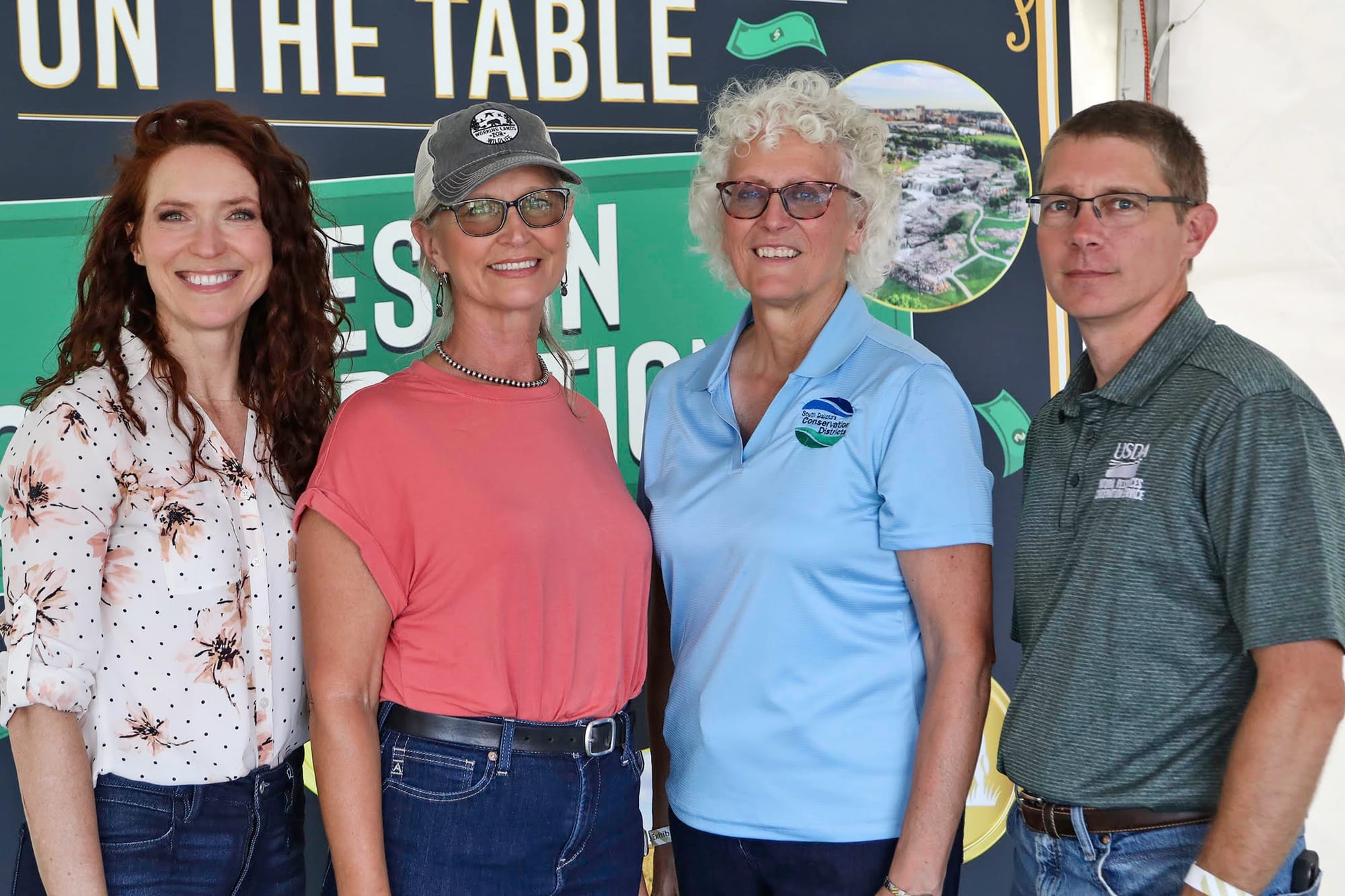
The team is also working with a South Dakota polling firm to roll out surveying and focus groups later this fall.
“We always want to begin with looking at what do they want to learn from us, the customer first-perspective. That’s where polling comes in,” Ehlers said.
“The survey includes questions such as ‘Where do you get your information? What is the speed bump you need to get over that would help you get more comfortable assuming a leadership role in your community?’ Doing our due diligence on the front end will resonate more with women and play an important role of what programming looks like in the future.”
Dakotafest in Mitchell in August served as the initial project rollout.
Blue, Ehlers, Kessler and DuVall connected with event attendees by handing out rack cards with basic information about the project and a QR-code survey link to begin gathering both demographic information as well as questions about programming of interest.
Among the topics: career development, fostering connections, supporting leadership roles, learning about farm/ranch business skills, marketing and understanding USDA programs.
“I focus on the natural resources side where Angela and Colette are focused on growing local leadership for conservation district boards and other leadership,” said DuVall. “Rebecca is really focused on the networking, educational and all leadership positions. All four of our efforts blend together well and help the project as a whole. The most important thing is continuity and providing opportunities on a regular basis for networking and lifelong learning.”
Ehlers and Blue both acknowledge that at this point, the project is very fluid. If the team members find a statewide issue that needs to be addressed, they will focus efforts there. On the other hand, they already know that local concerns and issues will apply to that area.
“Some will be geographic, our state is very diverse. I’m hopeful our first successes will guide the project and bring forward what we need to be doing to serve women across the state,” Ehlers said. “We have an idea. Until we put it on the ground we won’t know exactly what it will look like.”
